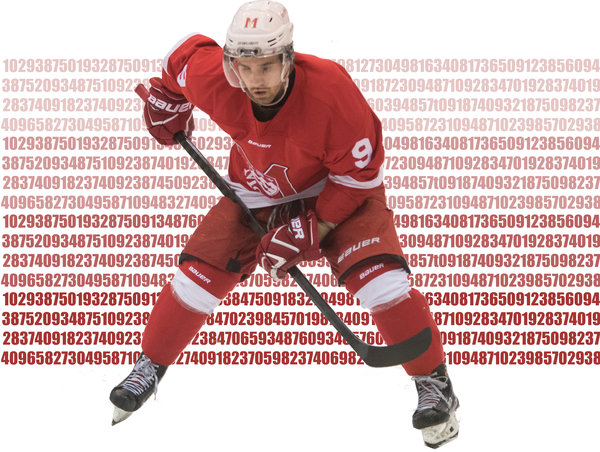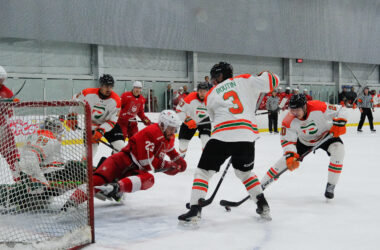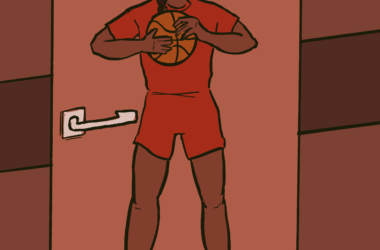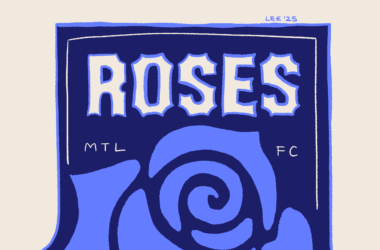If you’re a sports fan, you may have have heard the terms “analytics” or “video” thrown around. “Analytics” is usually accompanied by some numbers and acronyms that you might not understand, while “video” sounds like a simple highlight reel. But what exactly are analytics and video analysis?
In a 2015 article on NHL.com, Arik Parnass provided a succinct definition.
“Anything can be a statistic,” Parnass wrote. “Analytics are distinct, the study of statistics to find meaning. Analysts look for reproducible patterns in large samples which illuminate important lessons about the game.”
Video analysis has been used for training and coaching in sports for a long time. In analytics, video recordings of games are often used to help accurately and precisely collect data. Sports analytics combines mathematics and sport, bridging the gap between two seemingly-unrelated fields. In the professional sports world, the collection and analysis of data is extremely beneficial—many professional athletes are faster, stronger, and more skilled today than they have ever been, forcing teams to use creative tactics to gain an edge. Analytics and video are two instruments that management and coaching staffs use to tweak small details and detect underlying trends.
At McGill, many varsity teams also use video and analytics as tools to improve their game. The Martlet hockey team films and analyzes every game, noting certain stats that U Sports does not track, including shot differential, a metric used to better understand puck possession.
Thomas Côté-Miller manages video and analytics for the team, and explained the process to The McGill Tribune.
“We usually have someone that films the game and we connect it to our computer and I code during the game using some [custom] software,” Côté-Miller said.
This data is stored so that the coaching staff can access it after the games, and use it to analyze the play of the team. The data contributes to coaching decisions in a variety of ways—for example, it can be used to assess different player combinations.
“[Say we] feel like these two defencemen are playing well together,” Côté-Miller explained. “[We can then] see what their stats are when they’re on the ice together […] and we can piece together things [….] We can go behind and go to the roots and see what’s happening.”
This analysis of the team helps reinforce coaching choices. Côté-Miller acknowledged, however, that it is by no means the sole basis for those choices in every situation.
“I wouldn’t say it’s the prime [way] to optimize lines or make lineup decisions,” Côté-Miller said. “But it’s definitely something that we look at with the coaching staff.”
For the Martlet volleyball team, detailed accounts of all possible statistics are kept. During games, several substitutes will keep track of a wide variety of stats for both their teammates and opponents.
“[We count] every touch […] the blocking, the hitting, the setting,” Martlet volleyball Head Coach Rachele Beliveau explained. “And then we have the serve receive. Every touch of every player is recorded somewhere. There’s a lot of things [to keep track of] in volleyball. It’s a very tactical game.”
Similar to many other teams, Martlet volleyball players and coaches use the data they collect to not only examine their own play, but to also understand the tendencies of their opponents. In volleyball, this requires understanding where opposing players are most likely to play the ball. For instance, is a hitter more likely to hit crosscourt, or down the line?
Analytics and video analysis have been used in volleyball for a long time, but Beliveau explained that methods and technologies have changed in recent years.
“The breakdown is better,” Beliveau said. “Before, we used to watch a video and we had to watch a whole game, rallies after rallies. Now, we can take only [one player’s play and analyze it independently]. This has been the evolution of what we’re doing. It’s not the video. It’s how we can analyze it, and how fast we can analyze it.”
Redmen basketball Head Coach David DeAveiro agrees that analytics in basketball have resulted in an evolution of the sport.
“[The introduction of] analytics has changed the game completely,” DeAveiro said. “Some coaches, old-school guys who never used to do it, are getting fired because they’re not taking [the new approach to analytics], especially in the NBA.”
DeAveiro uses film and analytics as valuable tools for coaching, but most of all, he employs them to evaluate other teams and prepare prior to matches. Rebound percentage, plus/minus, and turnover-to-assist ratio are just some of the numbers he and the team analyze. Offensive efficiency is something the team pays extra attention to—particularly for their opponents.
“[We look at what] the other team’s efficiency in certain offensive situations [is], who’s involved in those situations, and [we try to] figure out how we’re going to defend that,” DeAveiro elaborated. “[We want to] know, ‘what are teams’ offensive tendencies based on analytics?’ You know, ‘are they a three-point shooting team?’ [It’s] things like that.”
DeAveiro stressed that although analytics are a useful tool, tracking digits can sometimes be a fruitless endeavour. Numbers are essential, but so is standard video analysis.
“Your eyes don’t lie to you,” DeAveiro explained. “Sometimes numbers can be manipulated, and not be really important facts, [but] sometimes they’re very important facts. So for us, we use video [as well.…] We say in our profession the tape doesn’t lie, it exposes people.”
The rapid advancement of technology has played a huge role in the growth of analytics.
“We’re getting ready to start a new system where we’re able to have one of our coaches in the crowd tagging live […] events [and] situations from the game, and sending [them] to us on our bench via tablet,” DeAveiro said. “We can show guys during the heat of the game what’s going on [… by showing guys on the bench] clips during the game of themselves [….] There’s only a couple [of] teams in the country that are doing that now.”
Of course, coaches and staff are not the only ones who make use of video analysis and analytics. From a player perspective, both assist in development and improvement. For fourth-year Myriam Robitaille, Martlet volleyball team captain, the stats collected are an important general indicator for quality of play, but don’t tell the whole story.
“[For defence], we just have a number, and sometimes, even if you got a zero on defence, maybe it was an excellent hit, the other team just won the point,” Robitaille said. “It doesn’t mean everything, but [the stats] give a good overview.”
However, video is something that has been much more beneficial for Robitaille as an athlete.
“Individually, [there are] few things you may like to watch [out for] better,” Robitaille said. “For me, it’s seeing the setter cause I need to make good decisions for the block [because] I’m the middle. It helps me a lot, but after that, once you have the information, you just play […] the game.”
The use of analytics in sport is a relatively recent phenomenon, but Côté-Miller believes that its contribution will only continue to increase. With the current speed of technological improvements, it will be fascinating to see how analytics and video further transform the sports we love.
“It’s just going to grow with time,” Côté-Miller said. “People are going to start using it more and more. [Right now,] a lot of the media […] doesn’t necessarily acknowledge its usefulness. People call it analytics, [but] it’s really not rocket science. It’s basic math that most people with an elementary school education can do.”









